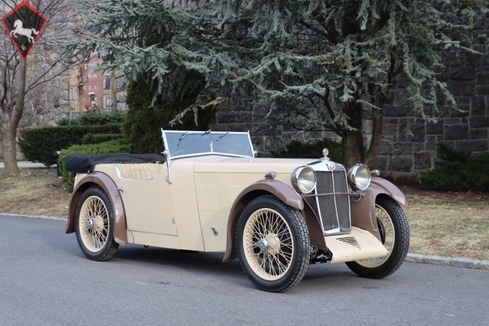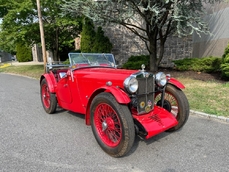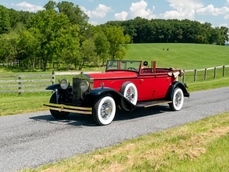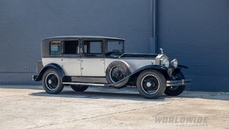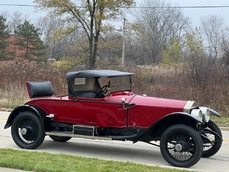MG J2 1932
General description :
Extremely Rare 1932 MG F-Type Magna TourerIntroduced in 1931, MGs F-Type Magna was produced for just two years with a total of 1,250 built between 1931 and 1932. It incorporated many advanced features into its design, including an unusually low chassis with underslung rear suspension and MGs first ever six-cylinder engine, providing higher performance and smoother operation than the four-cylinder M-Type Midget. Small six-cylinder cars became very popular in the early thirties, in the quest for smooth running engines with flexibility. The chassis was largely intended for sporty touring as well. They had success in rallies, record runs, and circuit races. This particular example is tan over brown with tan interior. It wears an older restoration and runs and drives well. A straight, solid, and clean example overall that includes its top and side curtains. A rare and extremely collectible Pre-War MG with only 1,250 models produced in total. A desirable and appealing British sports car of purposeful appearance, this F1 should prove ideal for a variety of events. Extremely Rare Pre-War MGOne of Few Surviving ExamplesStriking and Ideal for Vintage ToursAn Iconic and Enthralling 1930s British Sporting Machine
1932 MG J2 is listed for sale on ClassicDigest in New York by Gullwing Motor Cars for $59500.
Car Facts
Car type : Car Make : MG Model : J2 Engine size : 0.0 Model Year : 1932 Sub type : Convertible Location : Astoria Vehicle Registration : Undefined
59500 $
Other cars listed for sale by this dealer
About MG
The MG (Morris Garages) story is a rich tapestry that spans several decades and involves various owners and corporate entities. Here is an overview of the MG story from its inception to the challenging period under the British Leyland (BL) corporation, highlighting key models and their specifications:1. Foundation and Early Years:
Year of Establishment: 1924
Founder: Cecil Kimber
Initial Focus: Coachbuilding and customization of Morris cars.
2. MG Octagon Logo:
The iconic MG octagon logo was introduced, representing the merger of MG with Morris.
3. MG M-Type Midget (1929–1932):
Key Features:
Compact two-seater.
Powered by a 0.8L engine.
The beginning of the Midget series.
4. MG T-Series (1936–1955):
Key Models:
MG TA, TB, TC, TD, TF
Key Features:
Roadsters with classic styling.
Success in motorsports, particularly in pre and post-World War II eras.
5. Post-War Era and MG A (1955–1962):
Key Features:
Departure from traditional styling.
First MG to feature a streamlined, modern design.
Available as a roadster or coupe.
Powered by a 1.5L engine.
6. MG B (1962–1980):
Key Features:
Classic British sports car design.
Available as a roadster or GT coupe.
Produced in high numbers.
Variants included the powerful MGC.
7. MG Midget (1961–1979):
Key Features:
Compact sports car based on the Austin-Healey Sprite.
Affordable and popular.
Various iterations with engine upgrades.
8. MG C (1967–1969):
Key Features:
A more powerful version of the MGB, featuring a 2.9L inline-six engine.
Limited production.
9. BL Corporation Era (1968–1980):
Acquisition by British Leyland (BL):
MG became part of the larger British Leyland corporation.
Struggles with quality control and labor disputes.
Decline in product quality and reputation.
10. MG MGB GT V8 (1973–1976):
Key Features:
Introduction of a factory-produced MGB with a V8 engine.
Attempt to inject performance into the lineup during challenging times.
11. MG RV8 (1992–1995):
Key Features:
Limited production convertible.
Revival attempt by Rover Group (successor to BL) to rekindle the classic MG spirit.
The MG story during the British Leyland era marked a challenging period with a decline in quality and reputation. However, the brand continued to be associated with classic British sports cars.
